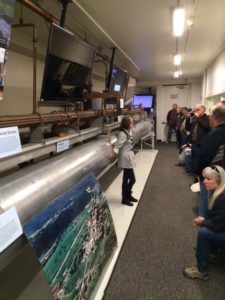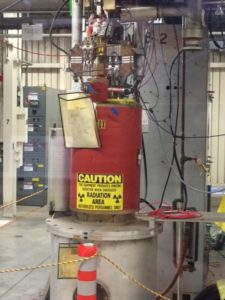
Our CCAS Members went on a road trip to SLAC on January 26, 2017! SLAC is the world’s longest particle accelerator and has done incredible science over the past 65 years of operation. Six scientist have won Nobel prizes for their work done at SLAC, and each year they turn out over 1,000 research papers!
SLAC does experiments in cores of giant planets, plasma, biomedical research, lithium batteries, creating new molecules (like diamondoids), discovering new particles and so much more. We enjoyed a special 2-hour tour with an incredible tour guide from their Cosmology department.
SLAC is the world’s longest particle accelerator and has done incredible science over the past 65 years of operation. Six scientist have won Nobel prizes for their work done at SLAC, and each year they turn out over 1,000 research papers! You can read more about their work here: https://www6.slac.stanford.edu/about/slac-overview
You can read more about visiting SLAC here: https://vue.slac.stanford.edu/visitors This page has important information about what to bring and what to expect on the tour if you’re one of the members signed up for this special trip!

The Central Coast Astronomy Society visit to SLAC was a very intresting trip. SLAC is located on the Stanford Ranch just to the West of the Standford campus in Palo Alto. SLAC was originally designed for particle physics work in the early 1960’s. It was the longest linear accelerator in the world. Over the years the SLAC facility has evolved, expanding to include storage rings where sub-atomic particles could be banged against each other. By the late 1990’s, even with numerous updates and expansion of the facility, it was becoming dated. The Department of Energy considered dismantling SLAC but then a physicist came up with a way to use the electron beam from the linear accelerator to generate a very high power coherent X-ray source (an X-ray laser) that could be used for a great many physics experiments. Since the development of this coherent X-ray source SLAC has created more physics tools using the old linear accelerator and when we visited they had a part of the the old accelerator closed down while they built a new tool. Our tour included a video on SLAC and a visit to the accelerator, where we had a lecture on the components of the original linear accelerator and then went out above the beam line to see some of the old (but updated) microwave sources and related equipment. After leaving the old accelerator we went to one of the old target buildings. At that building we saw a new wide area telescope being built at SLAC that will go into an observatory in a desert in Chile. Our guide was a graduate physicists student working on a device that would detect dark matter deep in an old gold mine in South Dakota. The photos give images from out tour.
Tom Coughlin
Member

